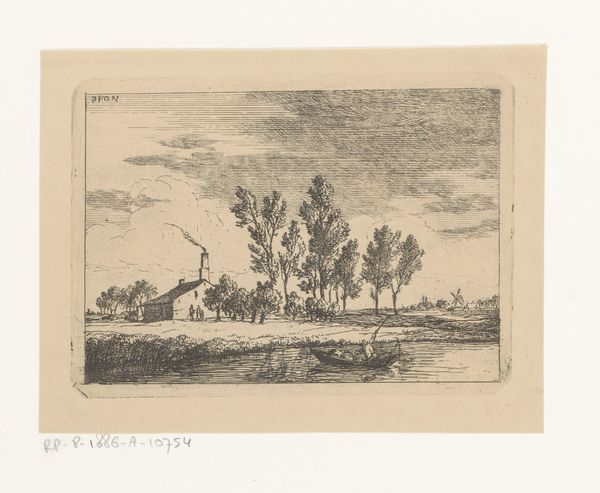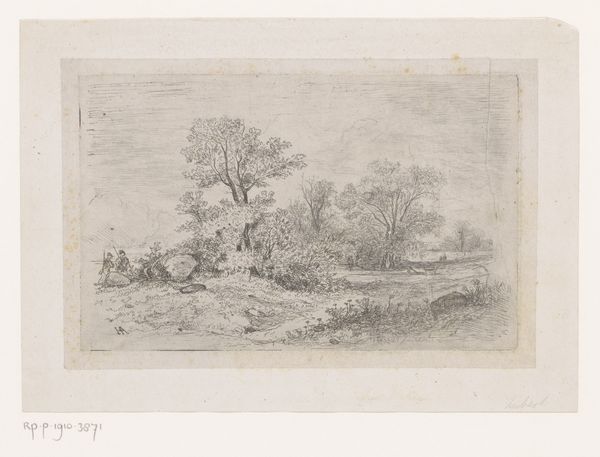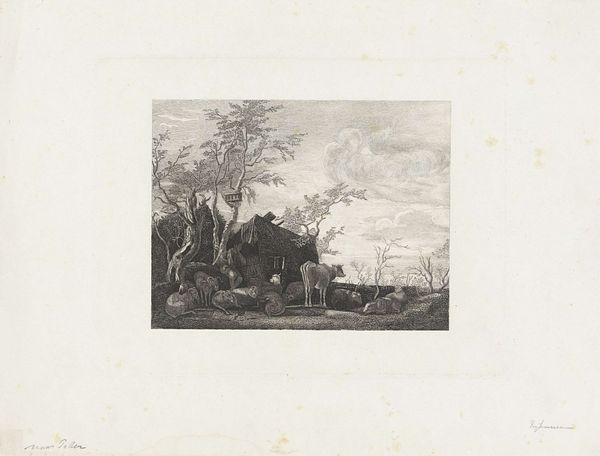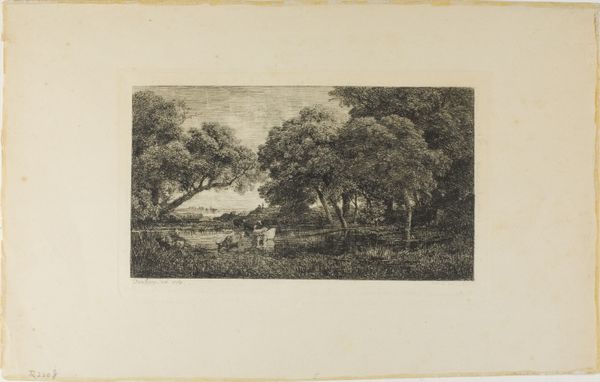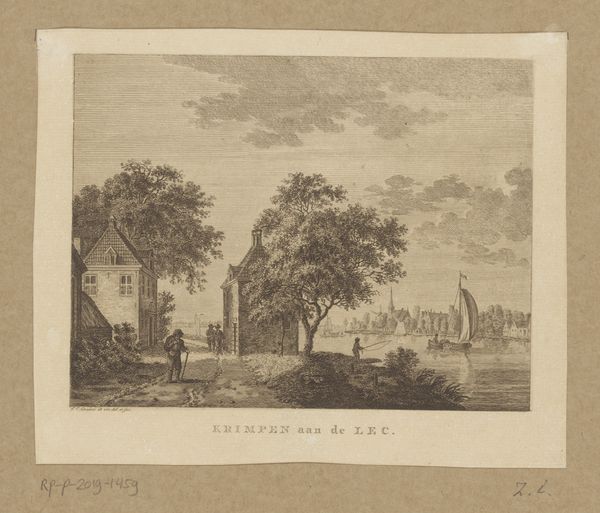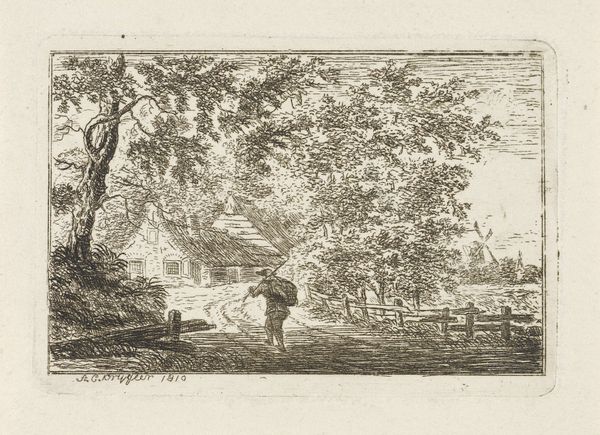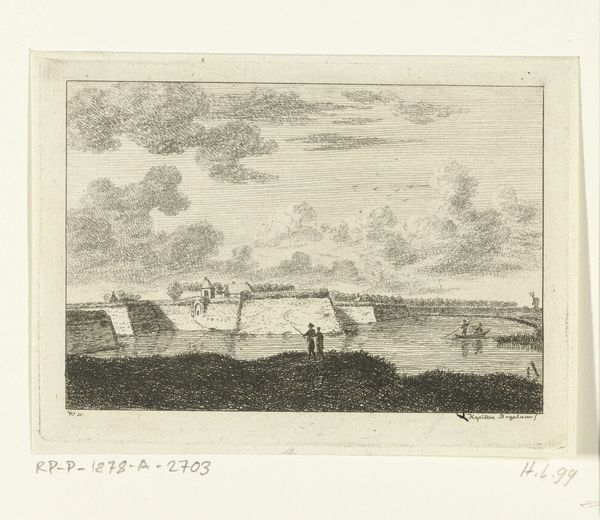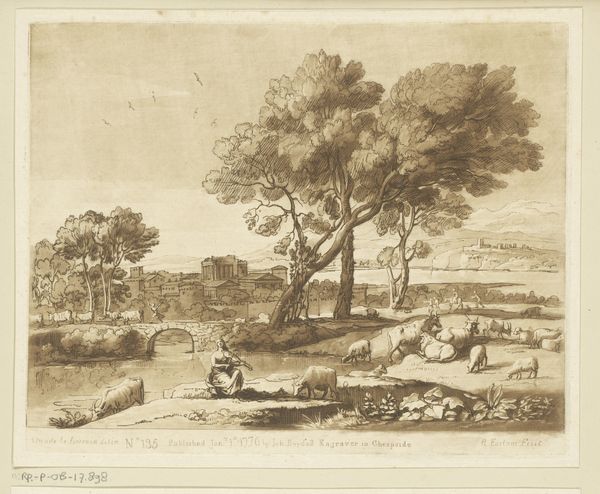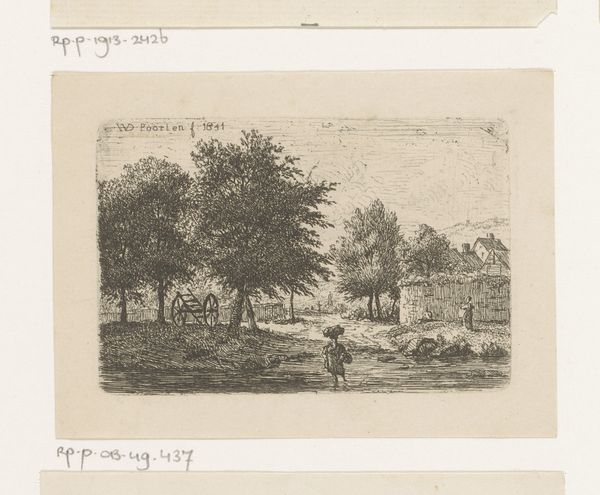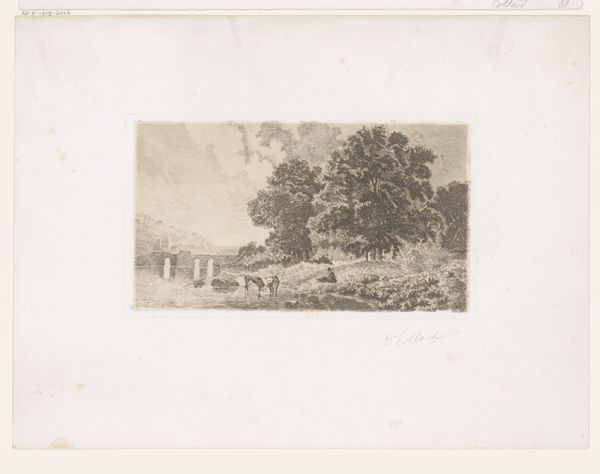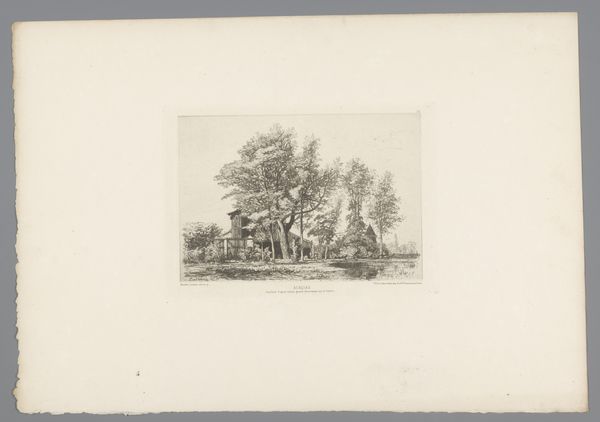
Dimensions: height 64 mm, width 79 mm
Copyright: Rijks Museum: Open Domain
Curator: Today we're looking at a work entitled "Oogst," an engraving created by Jan van Noort. The piece, believed to have been made sometime between 1766 and 1837, depicts a harvest scene. Editor: It’s evocative, in a strange way. Despite the idyllic landscape and implied communal effort, I feel a distinct sense of… alienation. A certain disconnect within the frame, as if everyone's laboring in their own private worlds. Curator: That's a very perceptive observation. I wonder if the social structures and gendered labor roles of the time influenced that. Was it simply a reflection of the realities faced by rural communities? Editor: Well, consider the context. It's an engraving. The materials, the very act of reproducing the image… it speaks to a burgeoning commodification of the rural scene. Land, labor and resources extracted in real life translated here onto a reproducible artwork meant for purchase. Are we romanticizing this vision of harvesting, while the reality might be one of extraction? Curator: And class division. Note the seated figure taking respite; contrast this figure's leisurely disposition with the others' taxing labour. The figure could signify class divisions, potentially highlighting disparities between landowners and land workers of the period, wouldn’t you say? Editor: Precisely. This work, and countless images like it, were likely made to appeal to a bourgeois audience eager for picturesque scenes. The repetitive work is inherent to its means of reproduction. Did it obscure laboring exploitation? What materials did van Noort need? I'd really like to know more about how they acquired the plates to do this! Curator: I agree, there are questions aplenty, all worthy of further exploration. What this art offers us is to prompt that deeper questioning; this scene provides the base. Editor: The landscape holds some insight for sure. It makes me ponder the unseen—what materials were involved in this artwork's existence? And more urgently, what happened to the labourers once their task was complete?
Comments
No comments
Be the first to comment and join the conversation on the ultimate creative platform.
